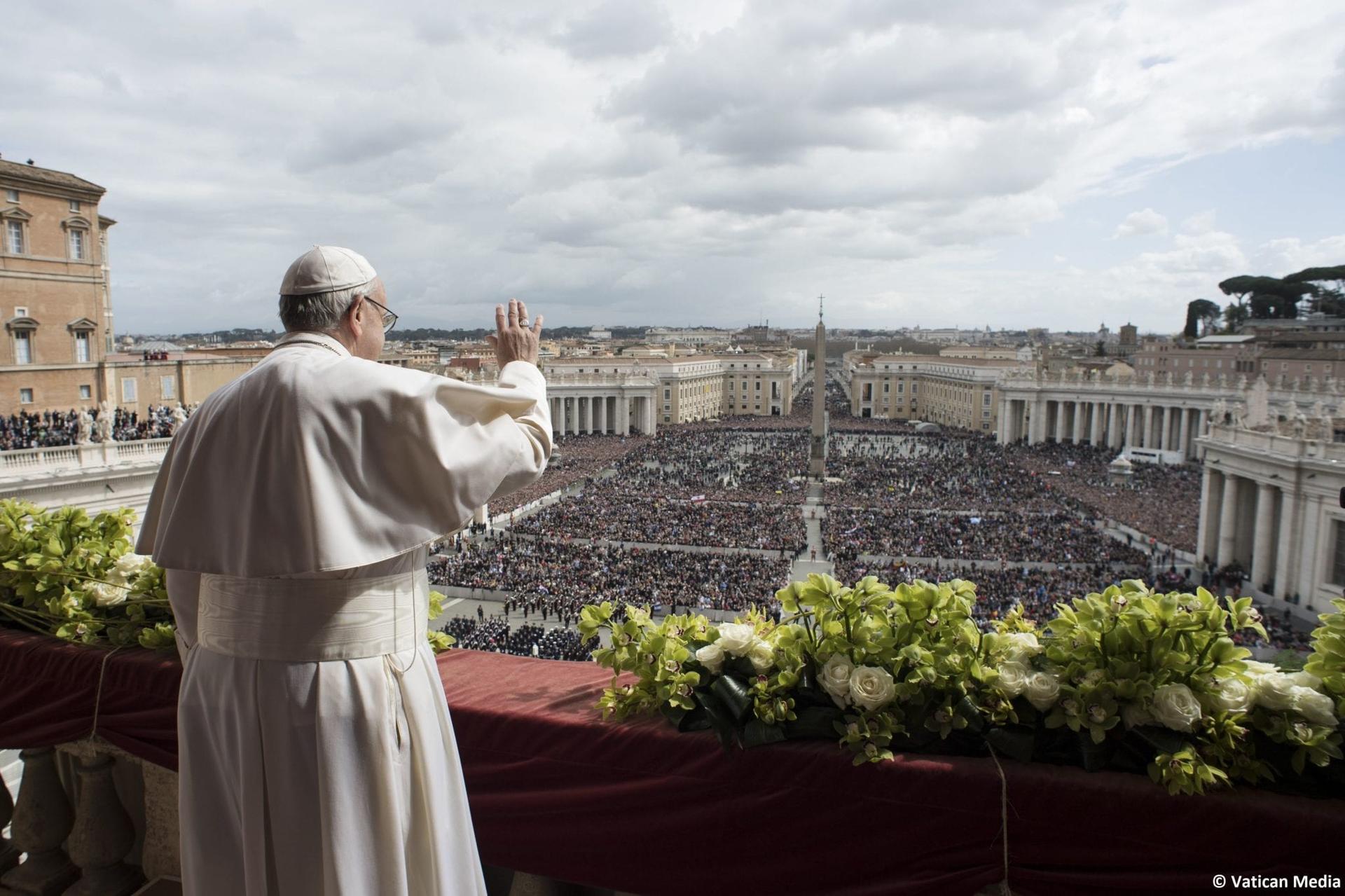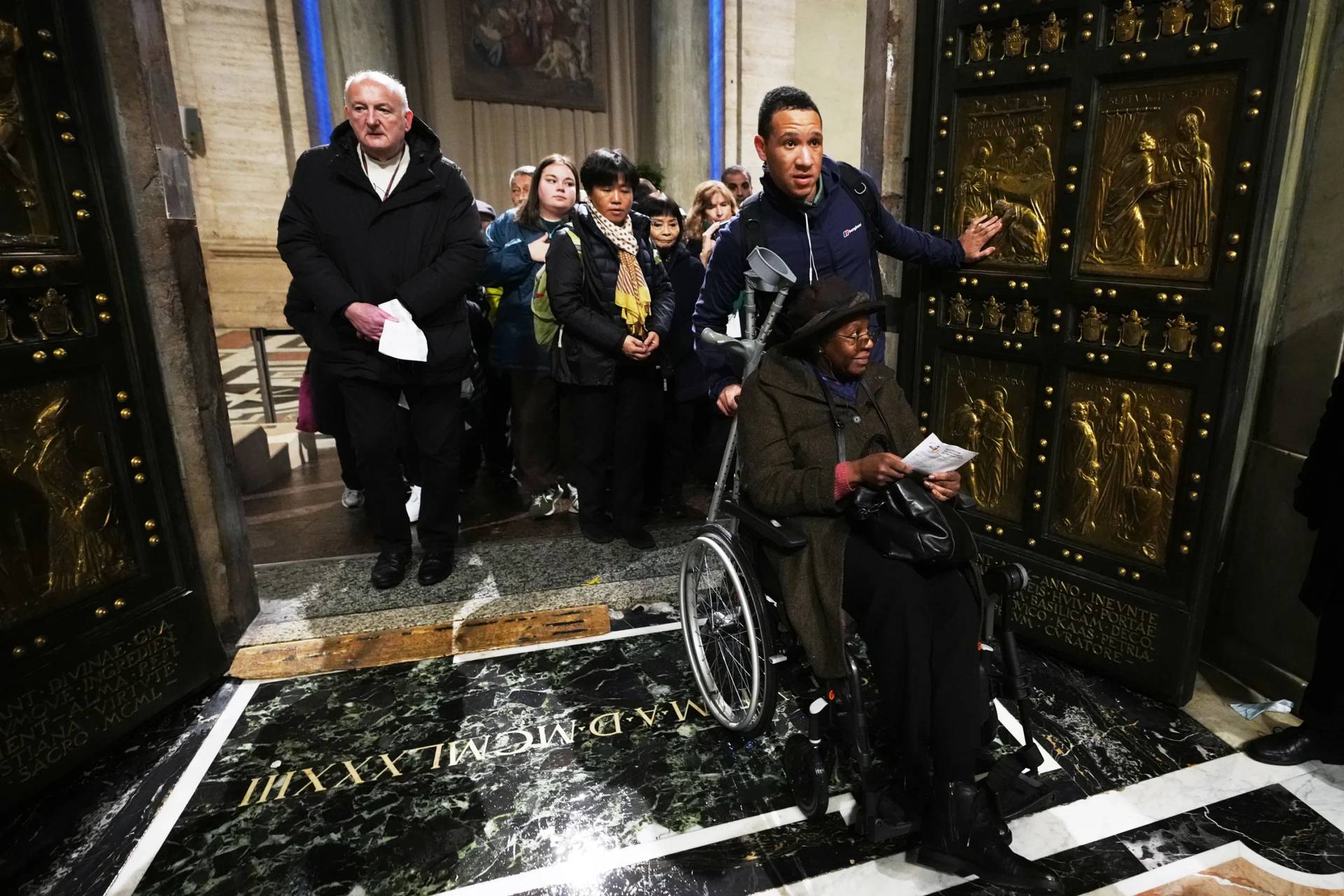ROME – On Christianity’s holiest day, Pope Francis said that the resurrection of Christ was a massive surprise, even to his closest followers, and drew the conclusion that “Our God is a God of surprises.”
“At the beginning of the story of salvation, it was full of surprises, with God telling Abraham ‘leave your land and go’,” the pope said. “It’s one surprise after the other. God does not know how to announce something to us without surprising us.”
“The surprise is what stirs the heart, that touches you precisely there, where you’re not expecting it,” he said. “To say it with the language of young people, the surprise is a ‘low blow,’ because you’re not expecting it. He goes and stirs you.”
Francis himself followed the “surprise” model in his Easter Sunday homily, speaking entirely extemporaneously and without any notes.
At the heart of the Easter story, the pope said, is the announcement that “Christ is Risen!” He noted that early Christians actually used that phrase as a way of saying hello to one another.
The surprises of God, the pope said, also have the effect of putting people into motion.
The women who found the tomb empty and Christ risen, the pope said, “were in a hurry … they ran to say they’d found him.”
“The surprises of God get us moving, right away, without expecting it,” Francis said.
“Peter and John ran too, like the shepherds on Christmas night ran to Bethlehem,” he said. “The Samaritan woman ran to tell her people, ‘I’ve found a man who told me everything I’ve done,’ because they knew what she had done.”
“This still happens today, in our neighborhoods and villages,” Francis said. “When something extraordinary happens, people run to see it. They go in a hurry. A housewife will leave the potatoes on the stove, because she’s in a hurry.”
“The surprise of the Good News is like that,” Francis said. “It makes us hurry.”
That led the pontiff to pose a question to the congregation gathered in St. Peter’s Square on the sunny and mild Roman day.
“Do you have your hearts open to the surprises of God?” he asked. “Are you capable of moving with hurry, or do you say ‘tomorrow, tomorrow’?” the pope asked.
“Today, on this Easter Sunday 2018, what will I do?” the pope asked believers to ponder. “You, what will you do?”
As is customary, the Easter Sunday Mass in St. Peter’s Square unfolded against the backdrop of a massive floral display which, since 1986, has been provided every year by the Netherlands, the world’s largest flowers exporter. The pope generally thanks the Dutch florists from the balcony of St. Peter’s Basilica at the end of his Urbi et Orbi address, and also greets them personally.
The custom of relying on the Dutch was a result of St. Pope John Paul II’s testy 1985 visit to Holland, one of the world’s most progressive Catholic cultures, which was marred by protests. The pope’s warmest welcome, however, came in the form of flowers assembled by the “Bloemenbureau”, the Dutch national flower society, and the Vatican later agreed that from that point forward, Dutch florists would be in charge of the Easter display.
This year, the square was converted into a sprawling garden featuring 26 trees, including ten birch trees ranging from 13 to 22 feet tall; 8,400 flowers, including 3,500 roses and 1,000 delphiniums; and 20,000 tulip bulbs, 13,500 daffodils and 6,000 hyacinths, for a grand total of 49,900 separate elements.
Vatican press materials explaining the arrangement said that orchids, the best-selling Dutch flower in the world, were selected to symbolize “friendship and pure love.” The use of yellow flowers, the Vatican said, represents “light and joy for the resurrection of Christ,” while green flowers decorated the altar because green is the color of “hope, strength, calm and peace.”
Paul Deckers, who coordinates the team of Dutch florists, said that trucks carrying the approximately 30 tons of flowers from Holland arrive in Rome on Holy Thursday, and that every year getting the arrangement set up by Sunday is a “race against time.” Prior to their arrival at the Vatican, the bulbs are kept in greenhouses at specific temperatures beginning in February so they come into bloom on Easter Sunday.
Immediately at the conclusion of the Easter Mass, Francis will deliver the Urbi et Orbi address, one of only two occasions each year, the other being Christmas, when the pope speaks to a crowd in St. Peter’s Square from the same central balcony in the basilica where he appears immediately after his election.
The Urbi et Orbi is generally a 360-degree review of the global situation, featuring the pontiff’s major diplomatic and political concerns at the moment.
On Easter Monday, a day known as pasquetta, or the “little Easter,” in Italy, Francis will deliver the traditional noontime Angelus address from the window of the papal apartments overlooking St. Peter’s Square.














